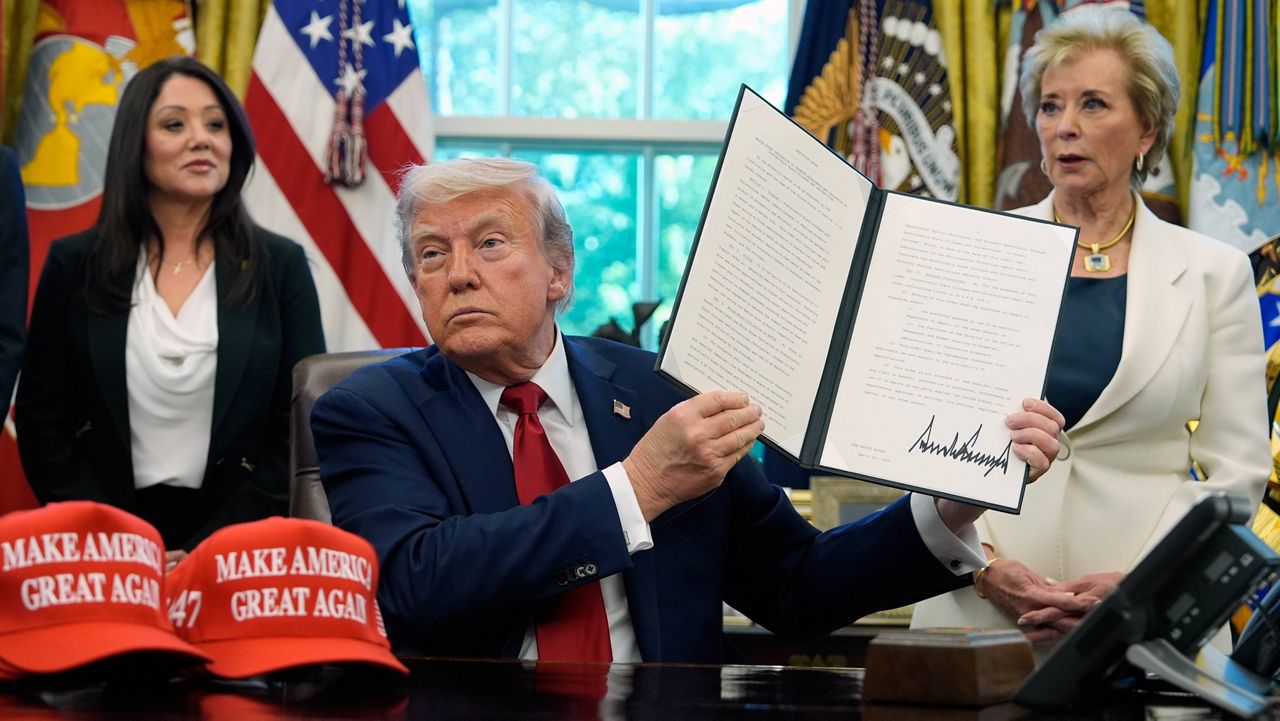SACRAMENTO, Calif. — While it’s still unclear how much California will spend to "Trump-proof" the state, the California Legislative Analyst’s office estimates the state could face a $2 billion deficit in the coming year.
What You Need To Know
- The California Legislative Analyst’s office estimated the state could face a $2 billion deficit in the coming year
- The LAO says revenue projections are $7 billion higher than what was estimated in the summer
- Legislative Analyst Gabe Petek emphasized there’s no room for new spending commitments
- Gov. Gavin Newsom will unveil his budget proposal in early January
The LAO’s report does not take into account any of the expected costs for any of the legal battles that California is expected to face against the incoming administration.
“We know that there’s some potential for California to be in the bullseye, but it’s not something we built into this forecast, we’re not trying to speculate here. We’re trying to give the legislature as clear of a picture as we can about the state’s financial position as it is now,” said Lesgislative Analyst Gabe Petek.
Petek described the state’s budget condition as being in “fair shape” and “roughly balanced.” He said that despite an estimated $2 billion deficit, California is in much better shape than it was last year because of several key factors.
“Revenues have been outperforming our state economy within this budget window, and it’s really been driven by income gains among high-income taxpayers which are benefitting a lot from the very strong stock market trends that we’ve been seeing,” said Petek.
He explained California’s booming AI industry and high-tech sector account for a large chunk of the surging revenues the state is seeing. The fiscal outlook shows the state will get $7 billion more in tax revenue than what was estimated in the summer.
H.D. Palmer, with Gov. Gavin Newsom’s Department of Finance, said the LAO report presents a reasonable starting point for the upcoming year.
“What’s new this year is the uncertainty that’s coming in this coming year — the dramatic change in federal policies that the incoming administration has telegraphed and what that may mean for California’s economy overall,” Palmer noted.
While President-elect Donald trump hasn’t released specific plans on the policies that could affect California, Palmer says the governor’s first draft of the budget will factor in some of the uncertainties and anticipated legal challenges that lie ahead with the new administration.
“They said openly that we’re looking at things like dramatically higher tariffs, we’re looking at changes to legal migration policies into this country which affect the tech economies in California and the workforce there,” added Palmer.
Republican State Senator Roger Niello, who’s the vice chair of the Senate Budget Committee, emphasized the need for more oversight on state-funded programs and government spending.
“I hope we can truly have a robust assessment of what we’re spending money on, what’s not working, and let’s get rid of programs that just aren’t working,” he said.
In a statement, Assembly Speaker Robert Rivas said, “We need to show restraint with this year’s budget because California must be prepared for any challenges, including ones from Washington. It’s not a moment for expanding programs, but for protecting and preserving services that truly benefit all Californians.”
Petek made clear there is no room for new spending commitments because of a projected shortfall ranging from $20 to $30 billion in the coming years.
The governor will unveil his budget plan in early January.













